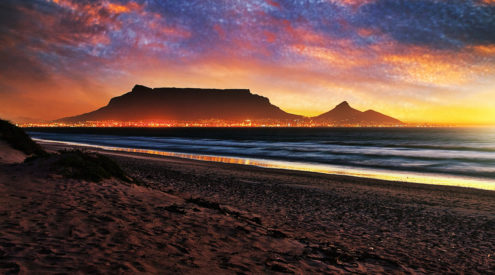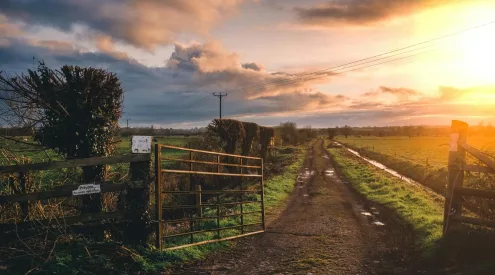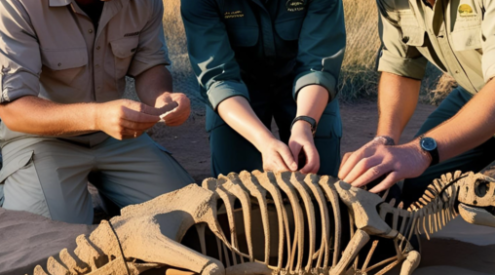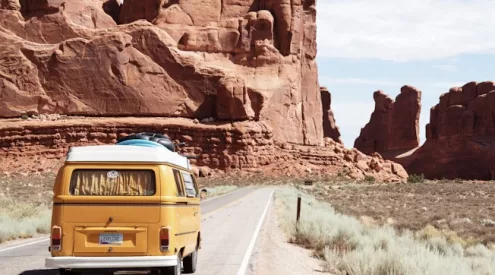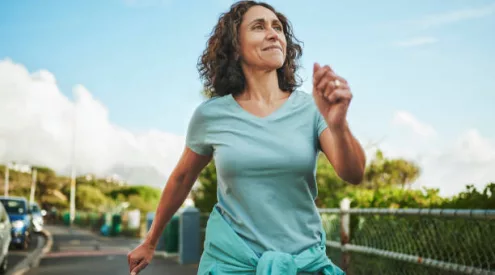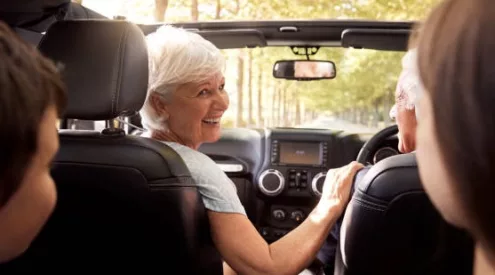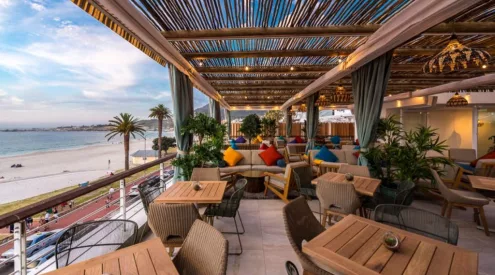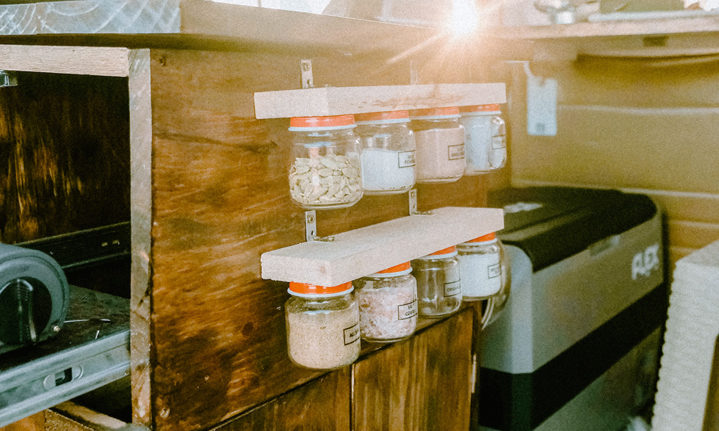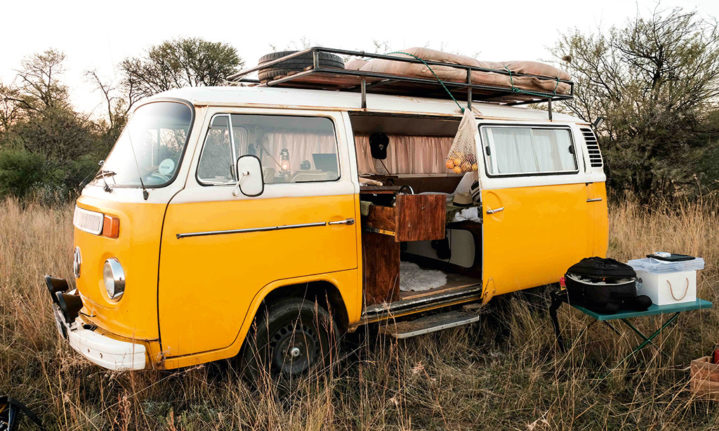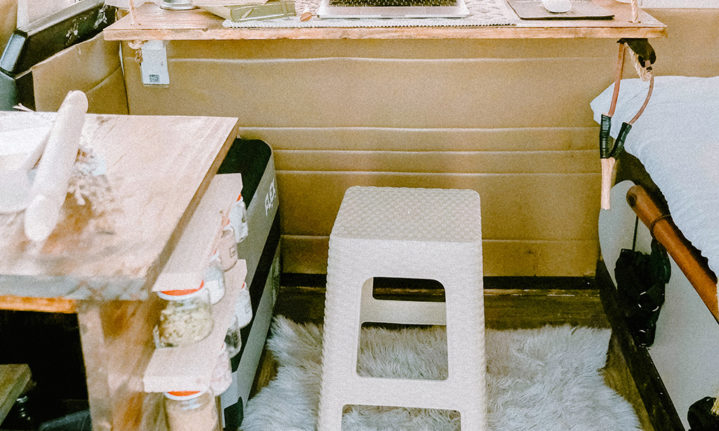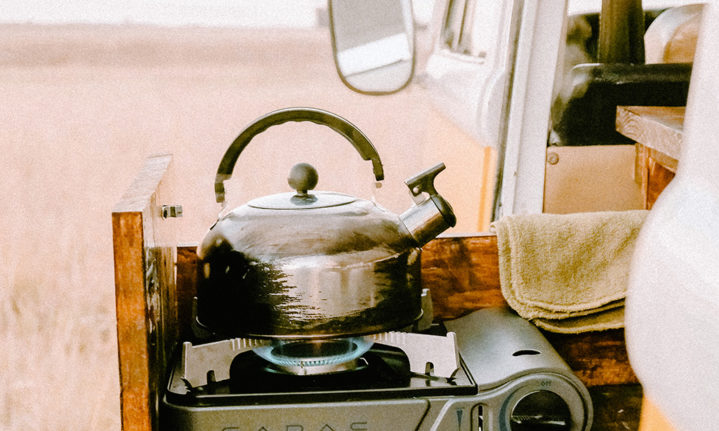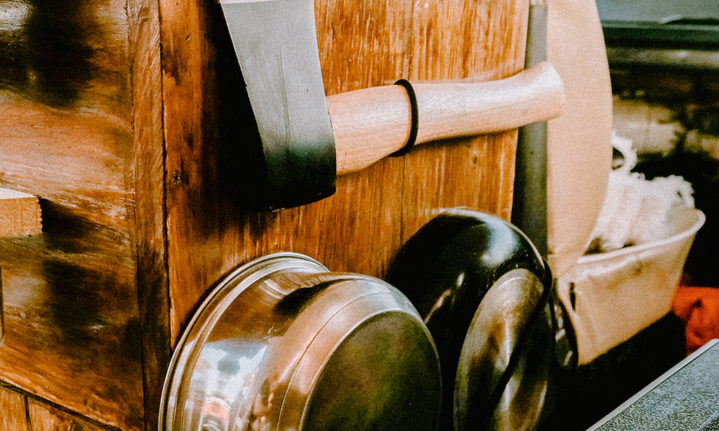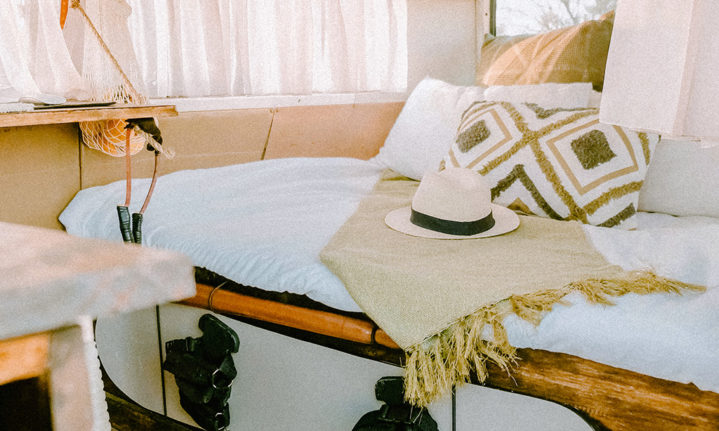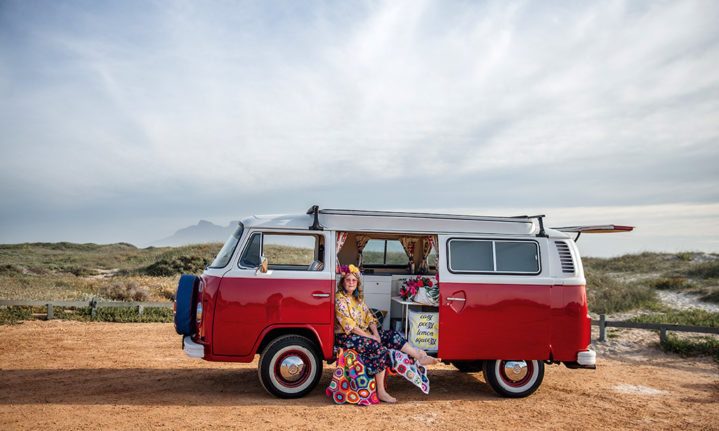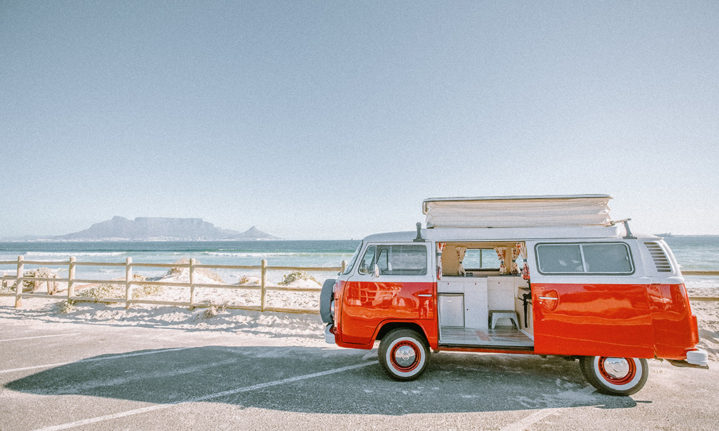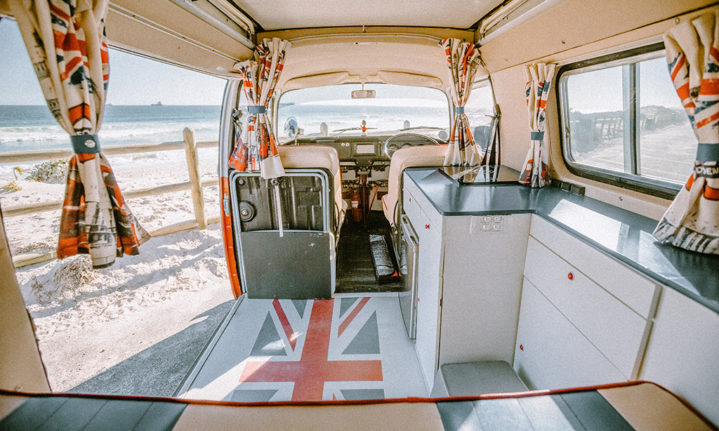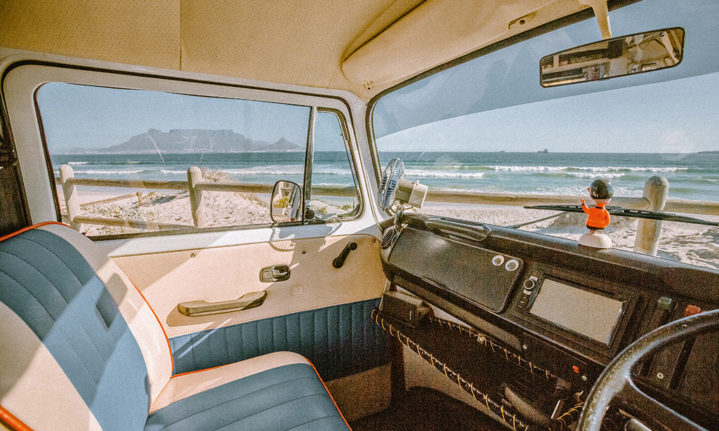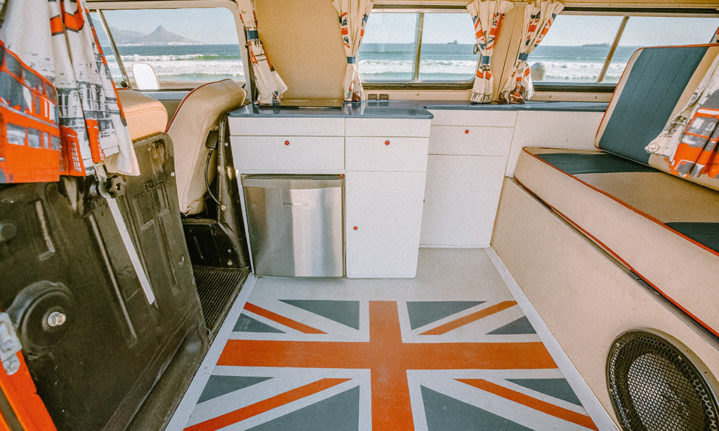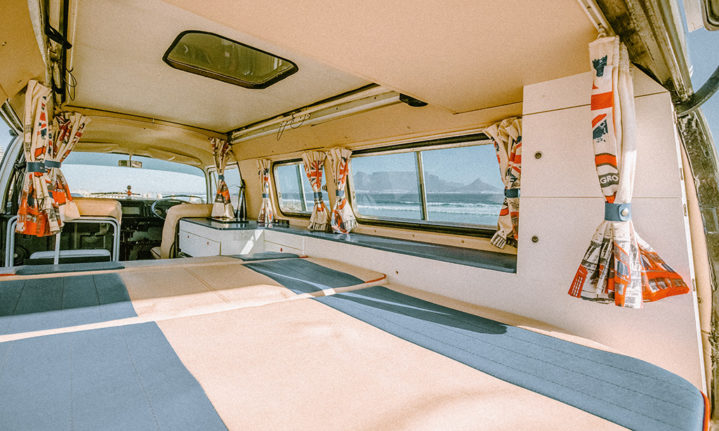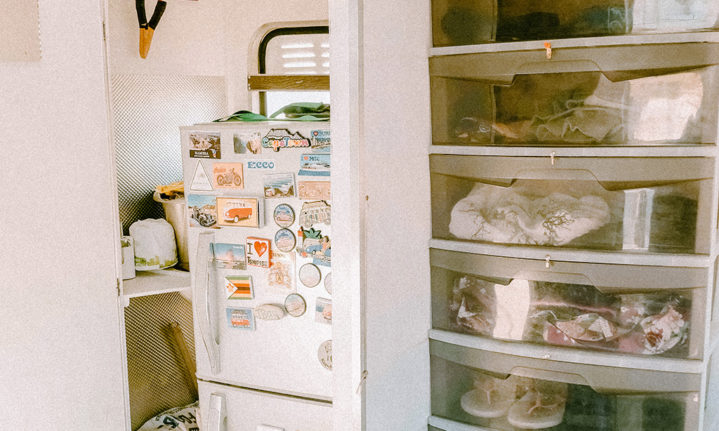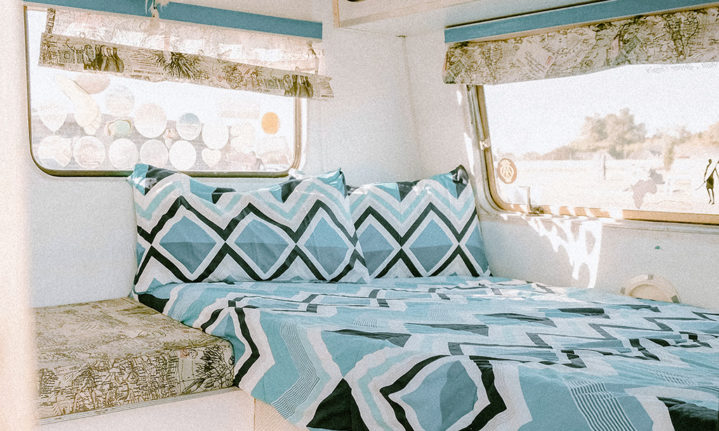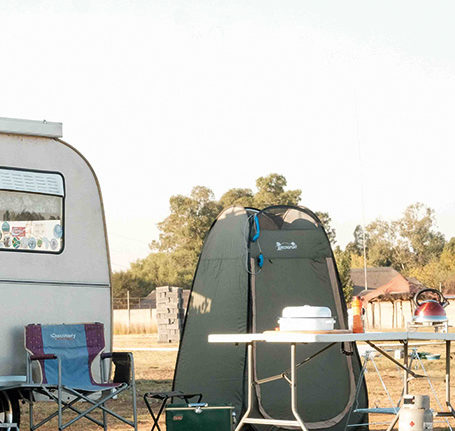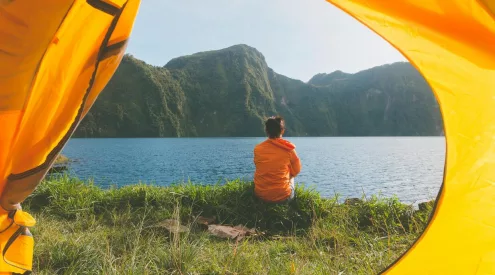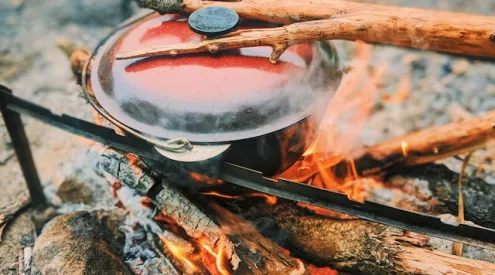Can anything quite compare to the freedom of having all your needs behind you and an open road before you? Gear Editor Matthew Sterne chatted to three van owners to find out.
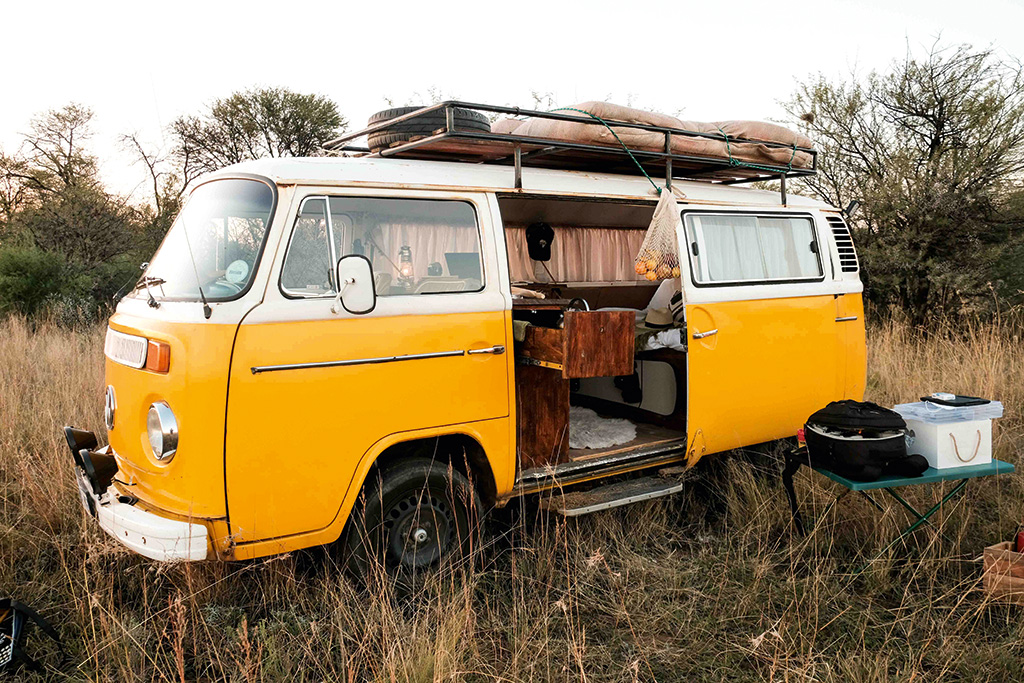
Etienne Swanepoel
1975 VW Kombi Type 2
‘I bought my van just after Lockdown last year. 4×4 Megaworld added a dual-battery system, spotlights, work lights and adapters to keep my fridge running and to charge all my gear. After my first trip, I decided to take the back seats out and convert it into a one-bedroom unit with a mini kitchen, work space and a double bed.
‘One of my favourite things about my van is that I can choose between three different sleeping spots depending on the weather. I have the roof rack, hooking my hammock on the side of the van, or inside. I love taking “my home” with me wherever I go and don’t need to search for accommodation. It’s a big conversation starter, which has led to meeting lots of interesting people. It comes with a lot of maintenance though. If you’re an adventurous person I would definitely recommend it. Plan your trip in advance and make sure to rig up your vehicle according to your needs.’ – Etienne documents his travels on his Youtube channel, Africa With Et.
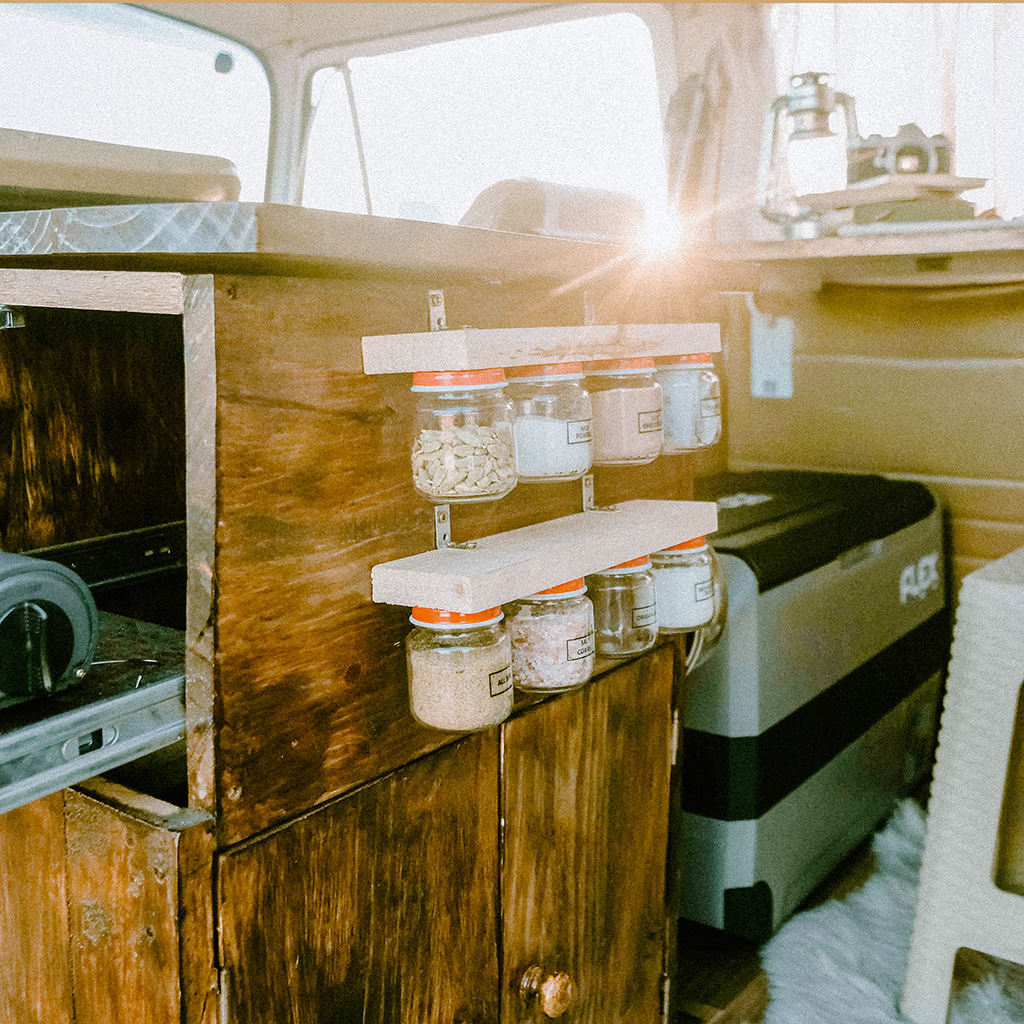
Spice rack
‘I decided to recycle as much as possible so I used wood offcuts for the kitchen. I attached some recycled glass jar lids to them, so I can screw the jars on. It’s practical and everything stays in place while driving.
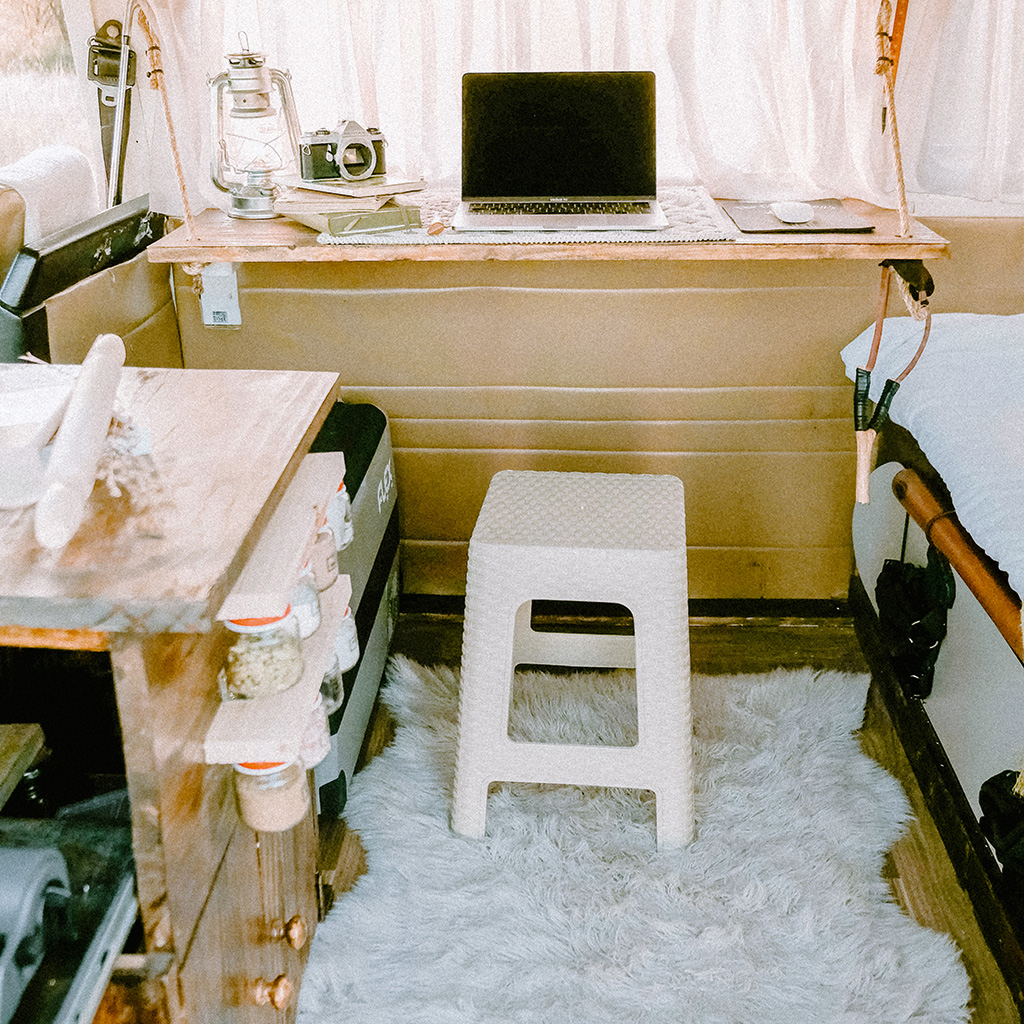
Work station
‘Being a professional photographer and videographer, the design of the workstation was important as I’m editing while travelling. I just need to unhook the attached rope from the platform to create more space when I’m not working. A 220-volt plug is installed for all my electronic equipment.’
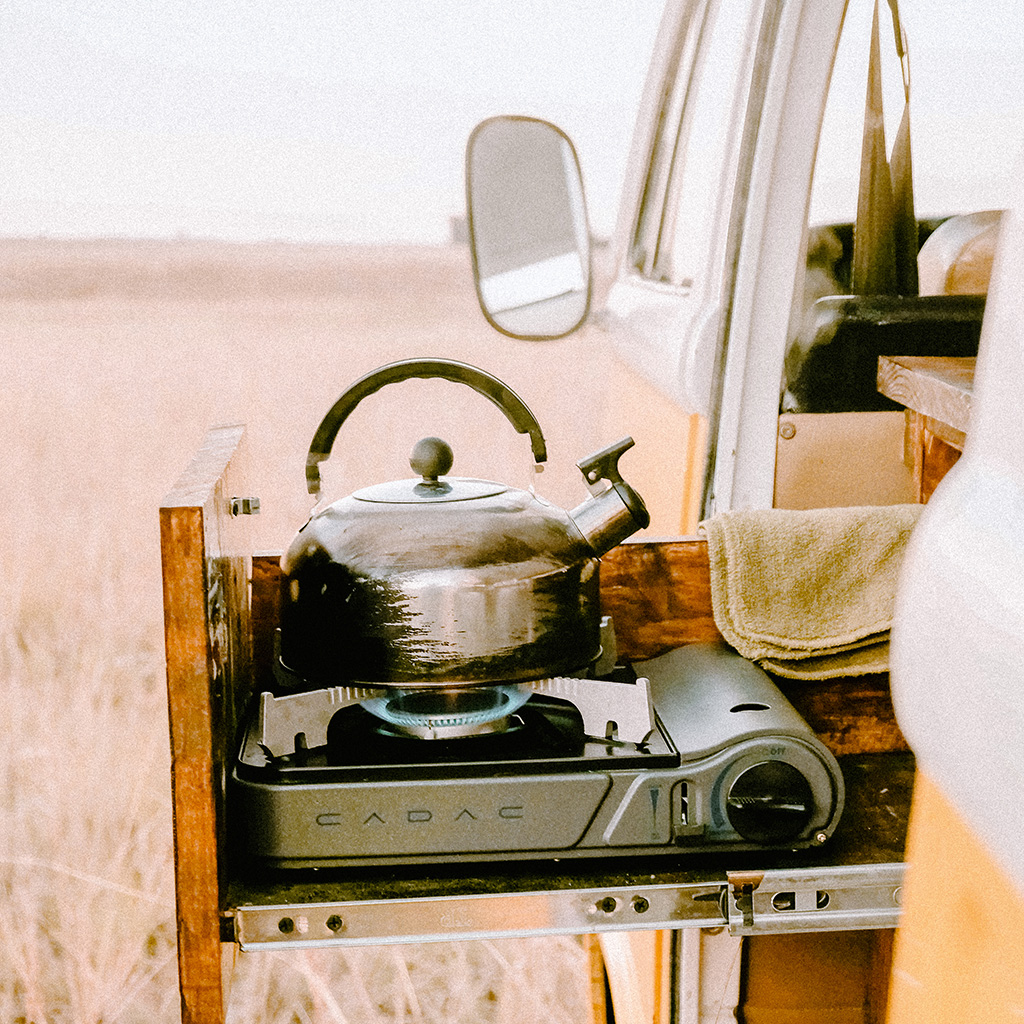
Stove and kettle
‘The gas stove is a Cadac (R489 on takealot.com) and I bought the kettle at an outdoor store (R239 on campcraft.co.za). I just pull open the drawer and it’s all set. I can cook up quite a good pasta or breakfast on this set-up.’
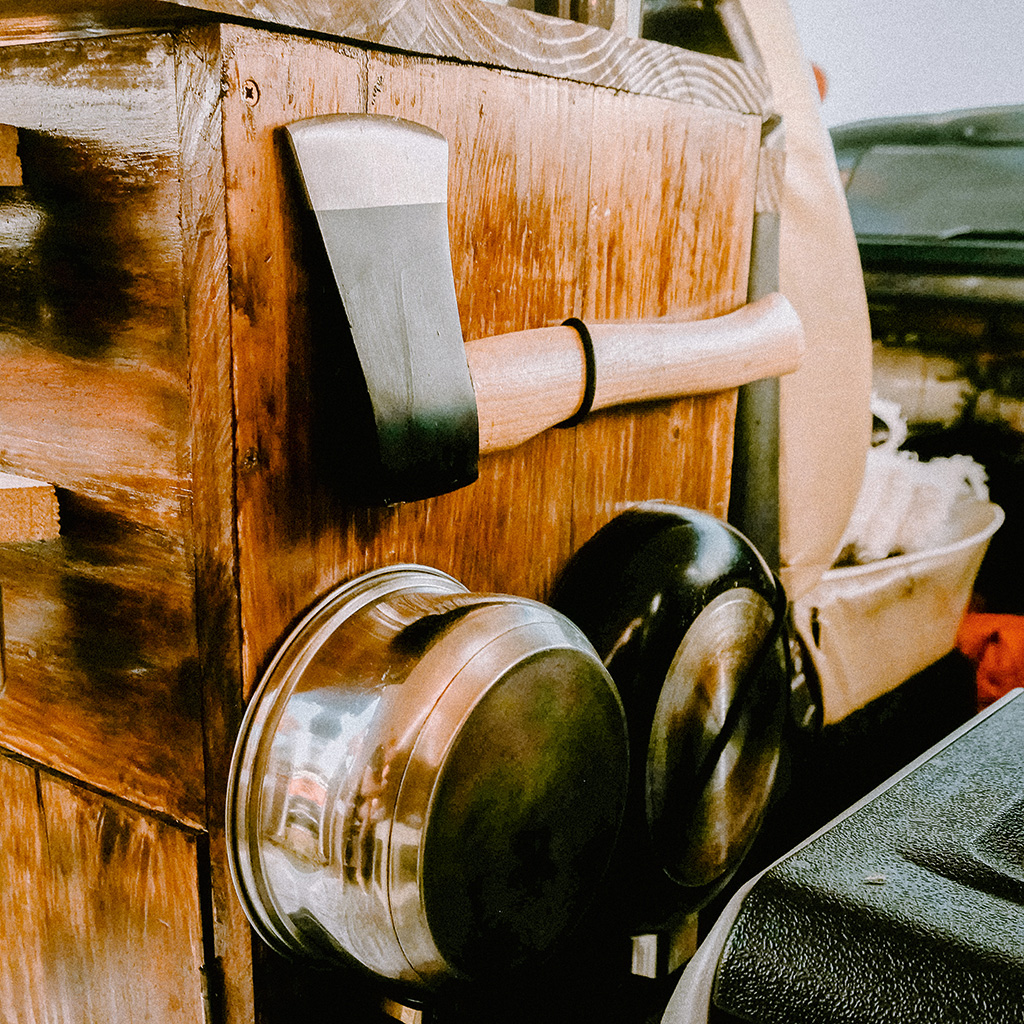
Axe
‘The axe comes in handy for chopping firewood. I drive with it like that attached to a piece of elastic rope.’
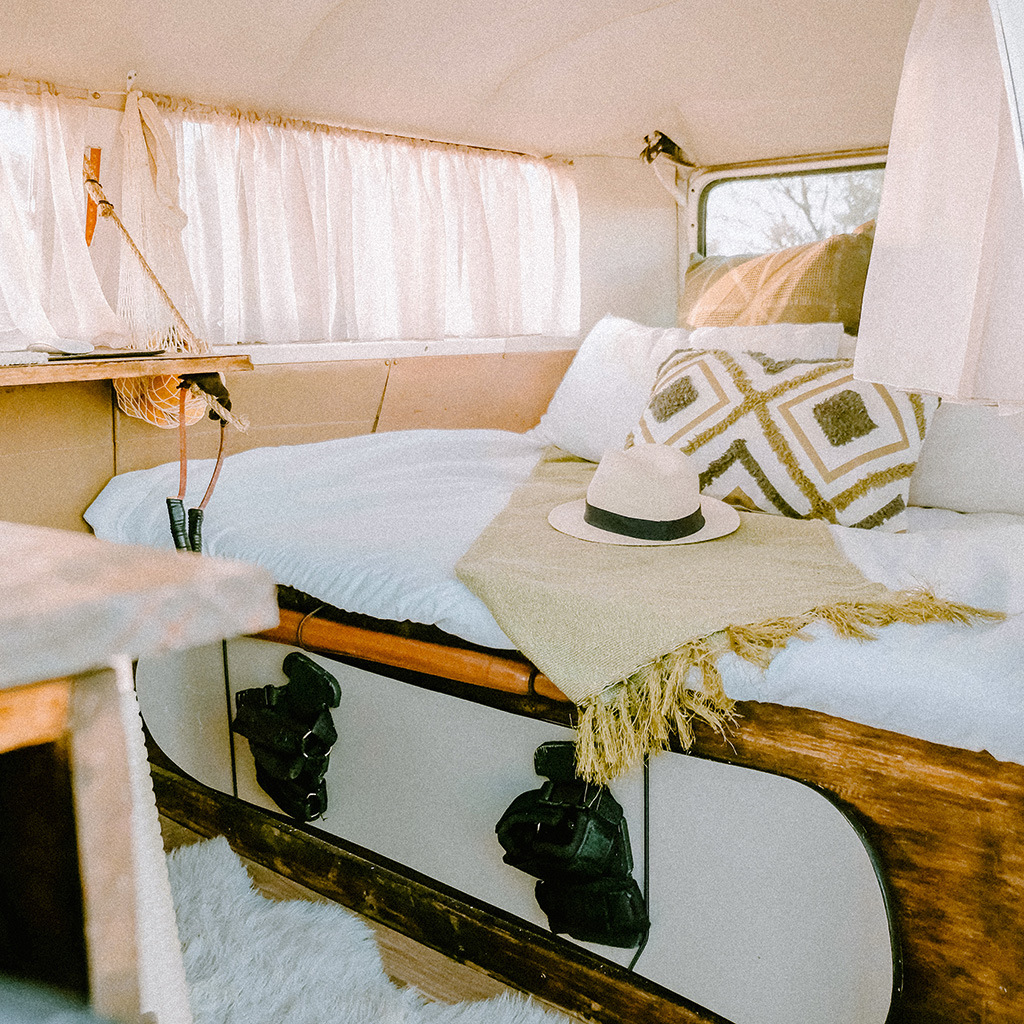
Sandboard
‘On an Eastern Cape trip I tried sand boarding at Gamtoos River Mouth. Now, whenever I’m at the coast I search for nice sand dunes to give it another go.’

Dee Gregory and Alan Paterson
Alan Paterson 1974 VW Kombi Type 2 ‘Winston’
‘We did a full rebuild after buying Winston in 2015. We wanted to chase lighthouses around the country – that was the challenge we set ourselves. We’ve visited about six or seven now. The fuel efficiency isn’t brilliant because it’s a brick. It’s not our day-to-day car but we’ll take it to the beach on the weekend or Killarney Race Track with mates. It’s perfect for a picnic, a day at the races or a serious camp.
‘Winston gets a lot of attention – everyone wants to come through and have a look and ask their questions. Every other person that you see, especially the older folks, had a Kombi in their lives at one point or another. Or somebody always knows someone who had one. It brings a lot of attention because of the British theme and it’s in good nick. People will hoot or give a thumbs up; I think it brings joy to people when they see it trundling down the road. And it’s a he not a she, let’s just be clear about that.’ Winston is available for shoots, find him on Instagram @Winstonthekombi.
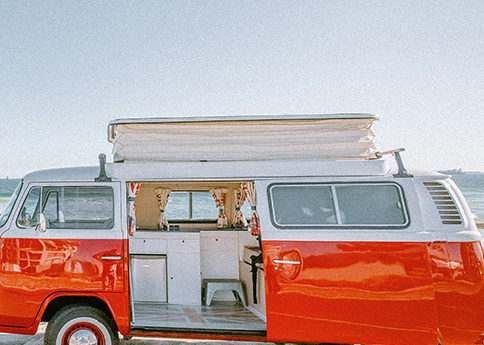
Pop top
‘The pop-top roof gives us an extra two feet and more space to stand and move around freely to cook or change.’

Stove
The stove is a standard induction top single plate (Russell Hobbs Single Plate Induction Cooker, R1 053 on loot.co.za). It directly heats a cooking vessel, as opposed to using heat transfer from electrical coils or burning gas – no flames or red-hot electric heating elements (uses a copper coil and magnetic field to heat) – and can only be used with induction or ferromagnetic cookware. It’s compatible with inverters and uses much less energy than a normal stove, manufacturers claim up to 56% less.
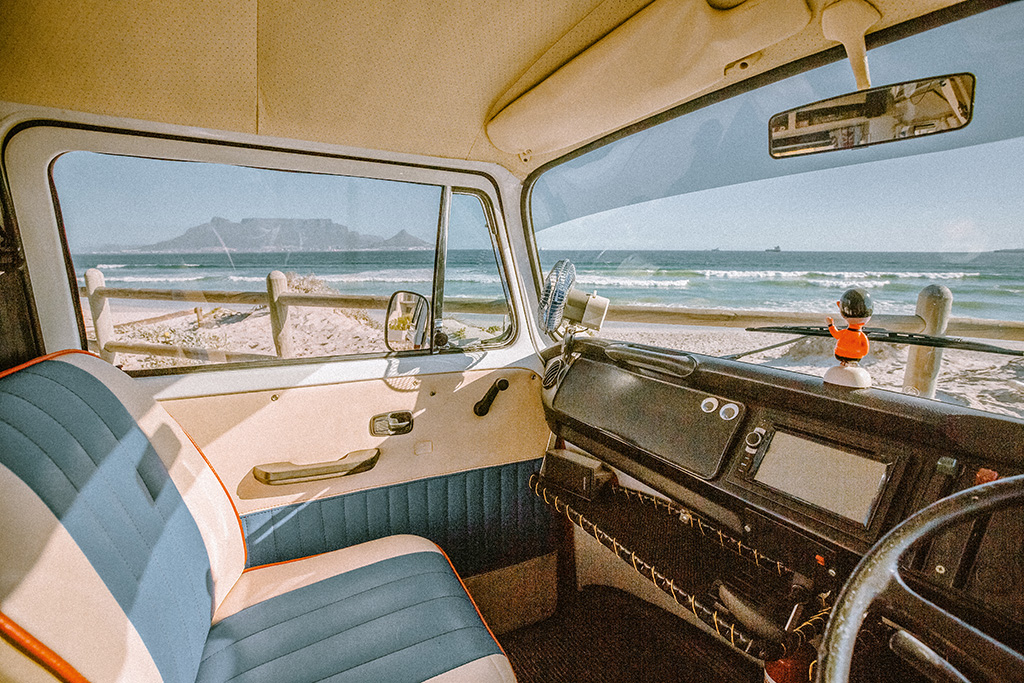
Fan
‘Winston’s got an air-conditioning unit, although the side windows let in a good amount of air, too.’
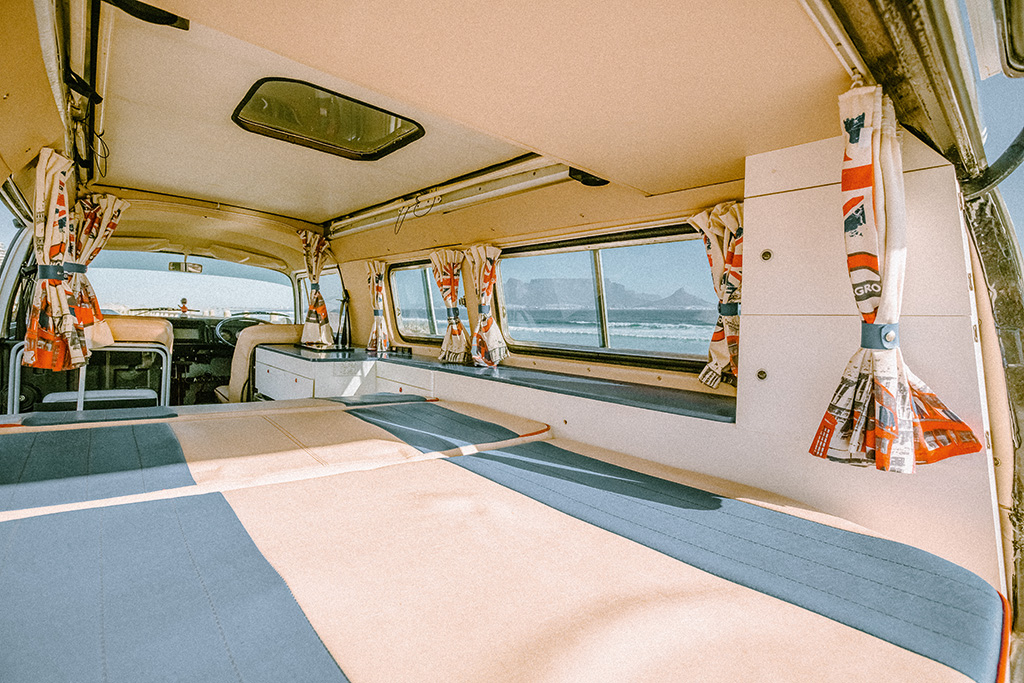
Bed
‘The seats can be converted, by using legs that are stored underneath them, into a bed. It’s big enough for both of us.’
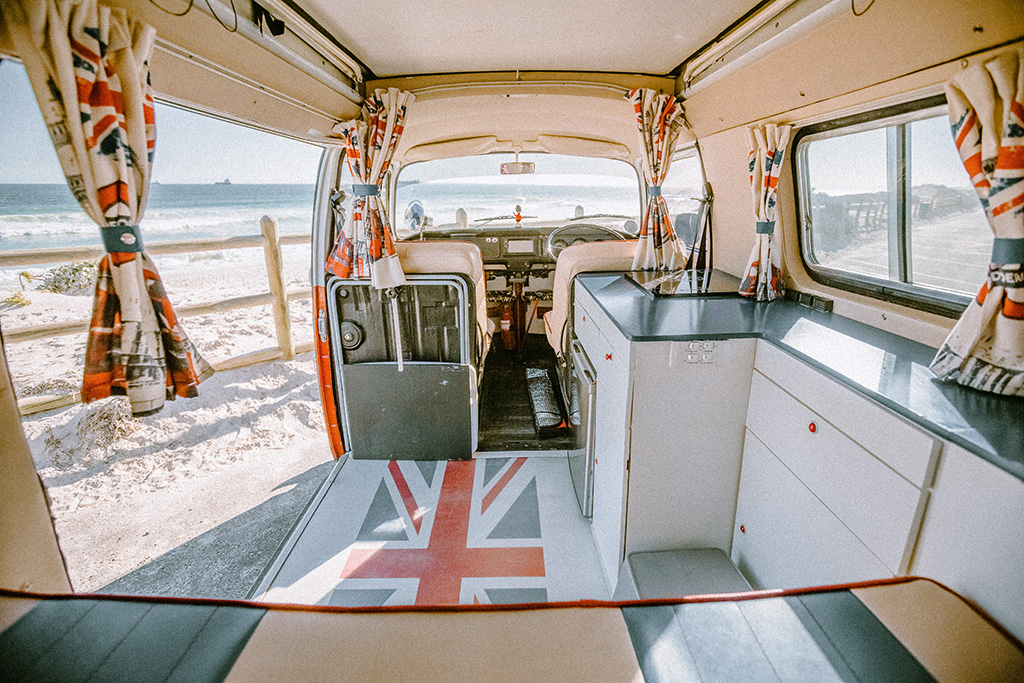
Cupboards
‘I got some specialists involved to do the motor but we did the interiors: the panels, vinyl and curtains. It took us about a year. Winston’s self-sustainable with lights, a big three-metre gazebo and all the camping gear waiting inside. We just need some clothes and food and we’re ready to go.’
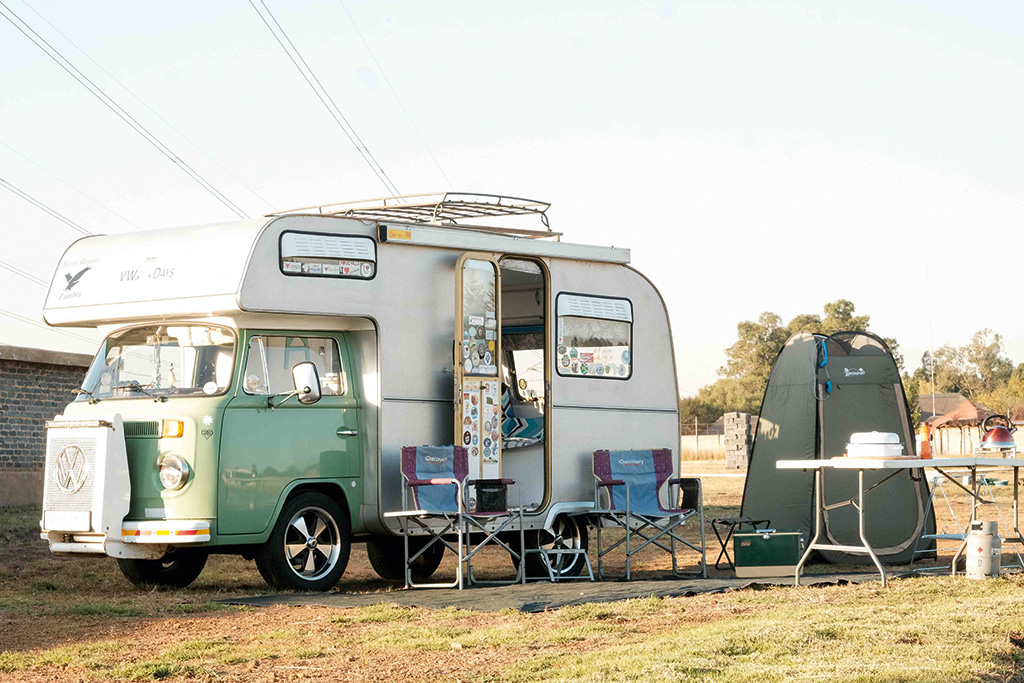
Craig Day and Chantelle Ashford
1978 Jurgens VW Autovilla
‘We bought it from a retired hippie in Richards Bay in 2015. We completely gutted the vehicle, repaired all the rust, changed the outer skins and re-designed the interior to suit our needs. People always come and talk to us. We have people follow us for miles just to take a few photos and find out the history of the bus. We’ve learnt our bed always has to be made because everyone just wants to see inside. It’s a South African icon so we love keeping it on the road and sharing the whole experience.
‘There’s no ABS, airbags, air-conditioner, on-board computer, ride control, 4×4 or satellite tracking but we love it. The children enjoy chilling on the bed watching movies on our way to our destinations. And we love arriving and being fully set up in 10 minutes. The drive is always part of the fun. As soon as we get into the Autovilla, our holiday starts.
‘We converted the engine to a Toyota 4Y engine because we want to drive it up to Europe and it’s much easier to find spare parts for that engine. Everything we’ve done is so we can travel to Europe in the van. Our biggest trip thus far was from Joburg to Cape Town, then on to Namibia, through Botswana to Victoria Falls and up to Malawi. We spent 45 nights in the van. And every December we spend three weeks in Jeffreys Bay. Altogether we’ve spent over 200 nights in the Autovilla.’
Van
‘There were only around 1 000 Jurgens Autovillas ever made, exclusively in South Africa. They’ve become so popular that they’re exported around the world. We have an annual Autovilla campout at the Volksie Museum in Bloemfontein and enjoy seeing each other’s efforts in restoring and maintaining them.’
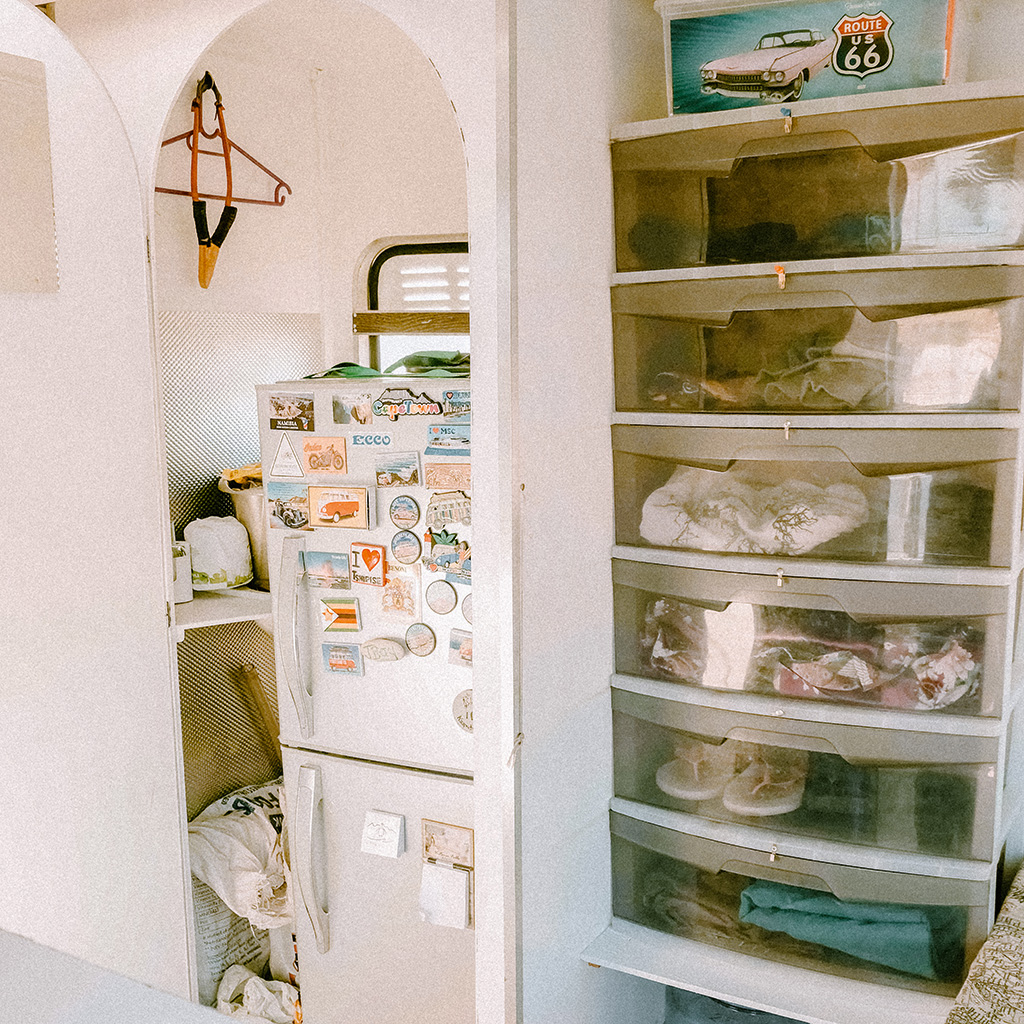
Storage
‘There was originally a shower and basin area. We decided we wanted to sleep in the van and all the cooking and showering takes place outside so we converted that room into a fridge and freezer, which works off 12 or 220 volts. While we drive, it keeps the beers cold and can plug into campsite power, too. At a later stage, we’ll add solar panels to the roof.’
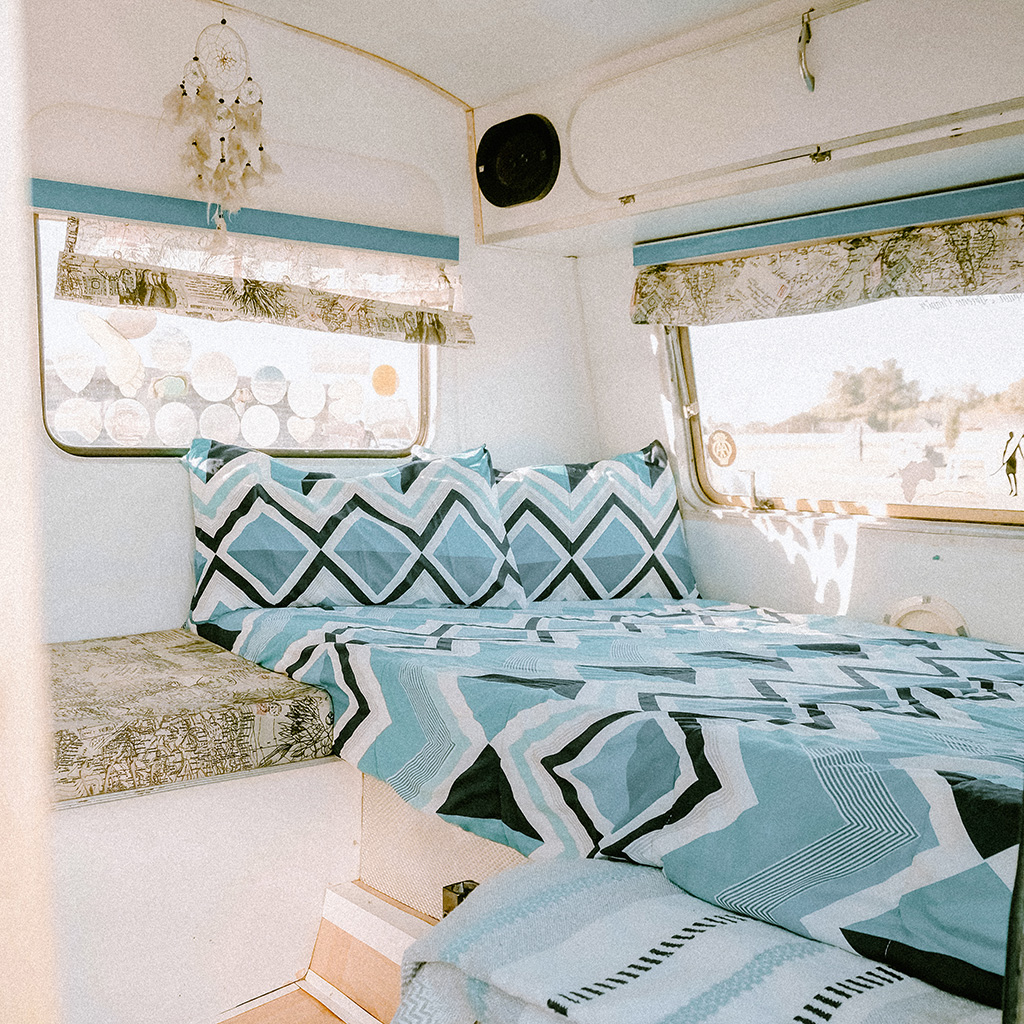
Bed
‘The double bed is standard. There’s a smaller bed at the top for kids, too. We’ve taken that bed out and used it as a storage area for all our camping gear, and if the kids are with us, we put the gear on the customised roof racks which also carry fuel, water and a spare wheel or tents.’
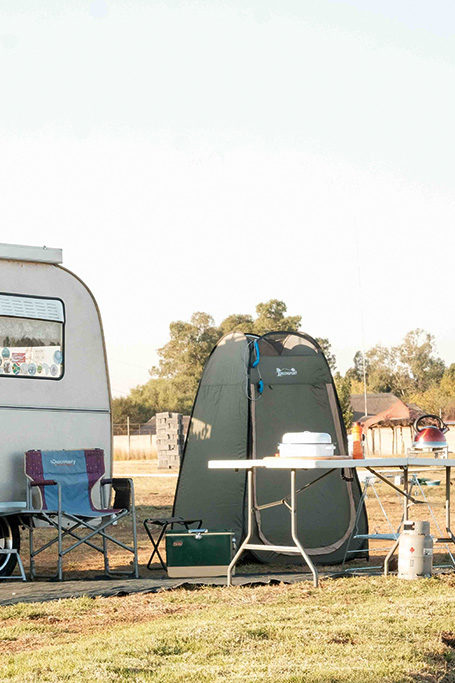
Outside gear
‘It takes 10 minutes to set up our camp and 10 minutes to pack up so it’s really efficient. That’s why they call it a snail cause we have our house on our back.’

